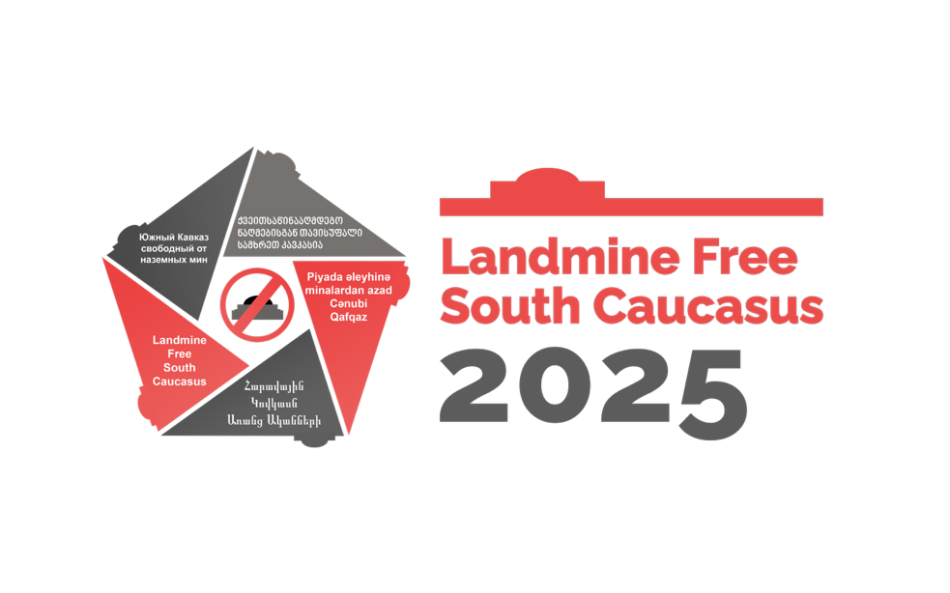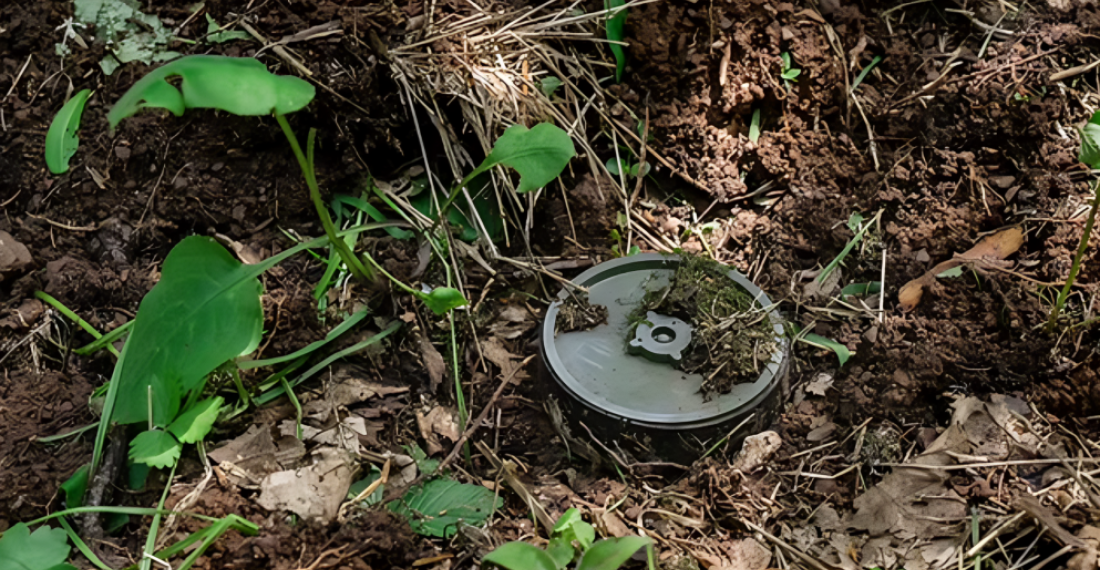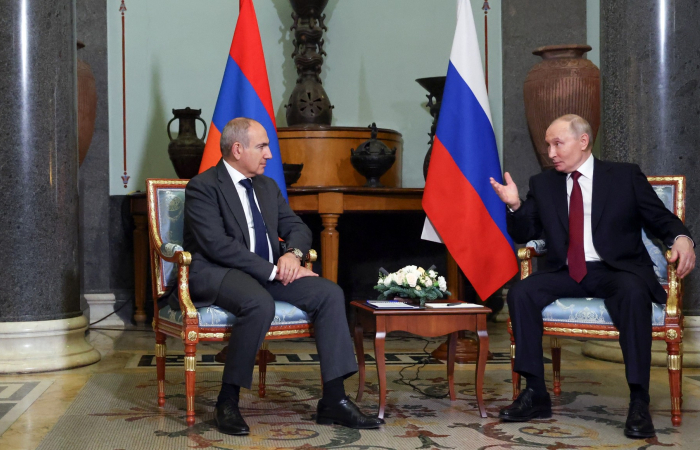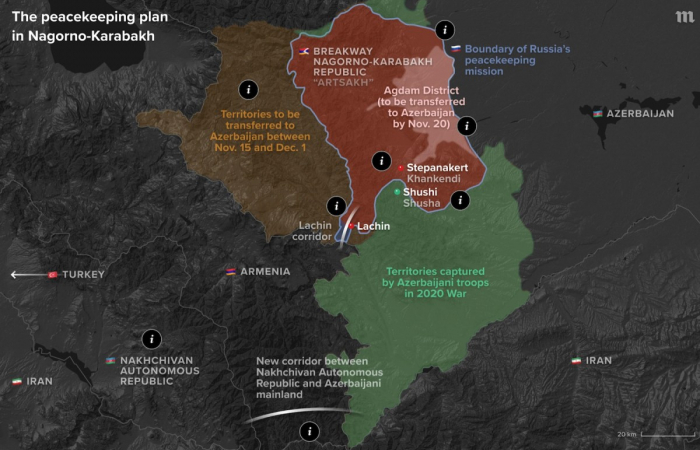On 1 September 2025, LINKS Europe launched the regional campaign 'Landmine Free South Caucasus 2025'.While the world's attention is focused on new conflicts and crises, and some countries have withdrawn from the Ottawa Treaty due to heightened security concerns, the South Caucasus remains trapped by the deadly remnants of wars, some fought decades ago, others more recent. Although recent months have seen breakthroughs in relations between Armenia and Azerbaijan, suggesting that sustainable peace is within reach, landmines and unexploded ordnance (UXO) continue to pose a daily threat in the region and remain a contentious issue in relations. They claim innocent victims, hinder economic development, and cause ecological damage.
The extent of the problem
The severity of the landmine problem in the South Caucasus varies greatly from country to country. Azerbaijan bears the heaviest burden, with over 13% of its territory (around 11,667 km²) still contaminated by landmines, primarily in the Karabakh and East Zangezur regions. Since 2020, 399 people have been killed or injured by landmines in this area, and the total number of indirect and direct victims over the past 30 years exceeds 3,400, including a significant number of women and children. Despite demining efforts having cleared over 200,000 hectares and neutralised almost 120,000 mines and explosives, vast areas of land remain inaccessible. This is delaying the return of around 800,000 displaced people and stifling the region's economic potential.
Thanks mainly to international support, Georgia has made progress in demining. However, strategic chokepoints remain dangerous, such as the area around the Red Bridge. Most of the mines are located near the border, posing a constant threat to local communities and agriculture. In Georgia, landmines hinder agricultural activities in this region, which has a negative impact on the livelihoods of the local population and potentially damages the local environment.
Armenia faces an equally daunting challenge with its landmine and UXO problem. Over 114 confirmed and 22 suspected hazardous areas remain contaminated, covering roughly 43.5 km² of land from decades of conflict, particularly in mountainous rural areas and along the border with Azerbaijan. The country's demining capacity is limited, and international funding falls far short of what is needed to clear these areas.
Yet, despite these shared challenges, regional solutions to the problem remain virtually non-existent. This lack of coordination represents a missed opportunity for peacebuilding through technical cooperation.
A striking inequality exists: while the capital cities remain virtually free of landmines and UXO, rural communities continue to live with daily terror. This creates a dangerous disconnect between policymakers and rural realities. While politicians debate safely in conference rooms, rural communities live in constant fear. This geographic and psychological distance results in chronic underfunding and political neglect of large-scale, coordinated regional solutions.
Climate change: The new threat multiplier
Beyond the immediate human cost, the climate crisis is adding a new dimension to the landmine problem. Extreme weather events such as floods, landslides and erosion can displace landmines from known locations into areas that were previously considered safe. These climate-induced displacements endanger civilians who believe they are walking on safe routes and force demining teams to restart their painstaking work from scratch.
Furthermore, extreme temperatures and unpredictable weather patterns are making demining operations increasingly hazardous and expensive. Teams that once worked year-round now face lengthy delays during heatwaves and unexpected storms.
Droughts and forest fires, which are becoming more frequent due to climate change, present a cruel paradox: they burn away the vegetation covering mines, making them more visible yet also more unstable. Demining experts warn that heat-stressed ordnance is becoming increasingly unpredictable, turning detection into a potentially lethal gamble. These cascading effects hinder post-conflict recovery, sustainable development, and broader regional stability. The climate factor highlights why regional coordination is no longer just advisable, but essential, as environmental risks do not stop at borders.
Political challenges and opportunities
The region's geopolitical context significantly complicates demining efforts. The fact that neighbouring countries Russia and Iran have not signed the Ottawa Treaty poses a security dilemma for Armenia, Azerbaijan and Georgia. The conflict in Ukraine has fundamentally shifted the global landscape. Russia's extensive use of landmines has prompted five NATO countries and Ukraine to withdraw from the treaty, effectively normalising what was once considered unacceptable and reducing the pressure on states in the South Caucasus to join.
Nevertheless, the current thaw in relations between Armenia and Azerbaijan presents an opportunity for action. The establishment of 'mine-free zones' with mutual monitoring could serve as a tangible confidence-building measure between the countries. Picture demining teams from both countries working together in border regions, turning instruments of war into bridges of cooperation. This approach acknowledges security realities while enabling concrete progress. Such initiatives demonstrate how humanitarian action can directly strengthen political trust, turning technical cooperation into a foundation for lasting peace.
The urgency of now
The international community cannot afford to treat the landmine crisis in the South Caucasus as a problem of the past. There are three compelling reasons why immediate action is required. Firstly, the humanitarian cost is unacceptable: civilians, often children, are injured or killed by these hidden killers every month. In August alone, three shepherds lost limbs to mines in Azerbaijan's territories. Secondly, minefields act as economic dead zones, locking away agricultural land and hindering vital infrastructure projects. The World Bank estimates that mine contamination costs the region over $500 million annually in lost productivity. Thirdly, the ecological damage poses a long-term threat to the region's biodiversity, with contaminated areas becoming de facto wildlife reserves that neither protect nature nor benefit humanity.
One of the recommendations that arose from LINKS Europe’s consultation process, which was conducted by the Landmine Free South Caucasus campaign in 2024, is to increase transparency and institutional dialogue in order to rebuild trust and improve effectiveness. This would entail enhancing the transparency of MODs' and national demining agencies' work on demining issues and fostering dialogue between these agencies and civil society. This could be achieved by setting up formal national dialogue frameworks, creating a shared database of contamination maps and evidence, and guaranteeing the participation of civil society in planning and monitoring activities. These practical steps would accelerate clearance, enhance accountability, and transform mine action into a genuine confidence-building measure.
LINKS Europe's fourth campaign rightly emphasises the need for a regional approach to achieve this. Landmines and UXO do not respect borders, and neither do the challenges they create. Only through cooperation, knowledge sharing and coordinated action can the three countries effectively address this legacy of conflict. With improved regional relations and growing awareness of climate risks, the time is right for transformative international support.
The South Caucasus is at a pivotal crossroads in its history. It can either continue a cycle of isolated, underfunded efforts guaranteed to cause decades more suffering, or pioneer a bold regional framework that would transform demining from a technical exercise into a triumph of peacebuilding. While the world watches new conflicts unfold elsewhere, the South Caucasus has the opportunity to demonstrate that old wounds can heal when former adversaries choose cooperation over continued fear. The time for half-hearted measures is over.
Source: Maximiliaan van Lange is a senior consultant at LINKS Europe Foundation and a Senior Research Associate at commonspace.eu. He coordinates regional advocacy campaigns, notably the 'Landmine Free South Caucasus 2025' campaign to eradicate landmines in Armenia, Azerbaijan and Georgia. He is also the co-editor of the South Caucasus Landmine Observer newsletter.
The views expressed in opinion pieces and commentaries do not necessarily reflect the position of commonspace.eu or its partners







